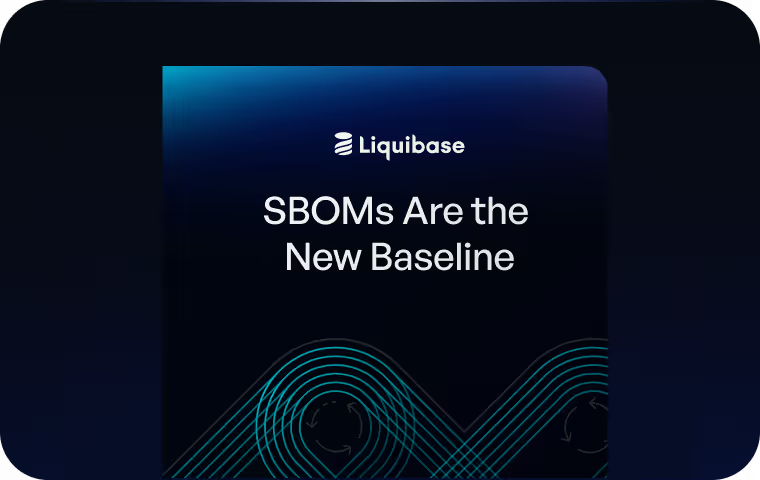Shift-Left Observability for Database Change
See what’s changing before it breaks production, audits, or AI pipelines.
What is Shift-Left Observability?
That’s where Liquibase Secure comes in. We don’t just surface issues, we catch them before they become incidents. Liquibase Secure brings shift-left observability to the database layer. It gives DevOps, platform, and compliance teams complete visibility into schema change before anything hits production. From policy violations and drift to structured audit logs, Liquibase makes the riskiest part of your stack visible, traceable, and governable.
The schema is still the riskiest and least-governed layer in modern architecture. Liquibase makes it observable.
The Database Change Blind Spot
- Schema changes are deployed without visibility, tracking, or approvals
- Logs are unstructured, inconsistent, or missing entirely
- Drift across environments causes silent breakage
- Compliance audits require manual effort and lack evidence
- Runtime tools can’t see what changed or why it changed
The Result?
Liquibase Secure Makes the Invisible Visible
How It Works in Your Stack
Full-stack observability is incomplete without database governance.
| Layer | Tools | Role |
|---|---|---|
| Application | GitHub, Jenkins, ArgoCD | Deploy app code with CI/CD pipelines |
| Observability | Datadog, Splunk, CloudWatch | Track runtime symptoms |
| Database |  | Track, validate, and govern schema change |
Business Outcomes
Proof in Action:
Zions Bank | Financial Services
Challenge
Solution
Resources to Accelerate Your Shift-Left Observability Journey
FAQ
Liquibase Secure focuses on pre-deployment observability for database change. We catch issues before they reach runtime. Logs, drift reports, and policy checks show what caused an incident, not just the symptoms. We complement runtime tools by making the schema layer observable.
Yes. Liquibase generates structured, machine-readable logs in JSON format. These can be routed to Splunk, Datadog, CloudWatch, Elastic, or any logging pipeline your team already uses.
Liquibase Secure creates a tamper-evident record of every schema change, including who made the change, when, where, and whether it passed policy. This makes it easy to produce audit evidence for frameworks like SOX, HIPAA, PCI, and GDPR. Teams no longer need to manually track or reconstruct change history during audits.
No. Liquibase Secure empowers developers, DBAs, platform teams, and compliance stakeholders. Developers get fast feedback. DBAs maintain control. Everyone gets full visibility and traceability into what changed and why.
Liquibase Secure tracks structural changes across your schema, including CREATE, ALTER, DROP, permission changes, stored procedures, and more. Changes are recorded with full context, and drift detection surfaces any out-of-process updates.
Yes. Liquibase Secure can compare development, staging, and production environments. Drift detection flags any differences, helping teams ensure consistency and detect unauthorized or shadow changes early.
Liquibase Secure blocks the deployment automatically, logs the policy violation, and alerts the relevant team. You can define and customize policies to fit your standards, including things like dropped columns, missing indexes, exposed PII, or improper privileges.
Liquibase Community helps teams version and deploy changes but lacks the controls required for audit, security, or regulated production environments. It does not include policy enforcement, drift detection, tamper-evident logs, or role-based approvals.
Most importantly, Liquibase Community does not meet the expectations of auditors or regulators. It lacks:
- Role-based access control
- Verifiable audit trails
- Gated approvals
- Policy enforcement at the point of change
Liquibase Secure is purpose-built for production, compliance, and scale.
Yes. Liquibase Secure integrates with your CI/CD systems to enforce role-based approvals. Developers can propose changes, but only trusted pipelines or authorized reviewers can promote them. Every step is logged, helping teams enforce separation of duties and satisfy regulatory requirements.
Yes. Liquibase Secure tracks every schema change across environments and versions. With structured logs and changelogs, you get a full picture of what changed, who changed it, when, and why. This provides schema-level lineage that supports AI governance, data model traceability, and regulatory reporting.



.svg)
.svg)









